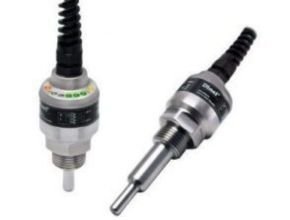MD26-36 Diaphragm Seals
Pressure – MD26-36 Diaphragm Seals are a reliable solution for protecting pressure gauges from aggressive, high-viscosity media or media prone to causing damage to the measuring device.

This product is designed to be used with pressure gauges, transmitters, or switches, maximizing the life of the gauge without compromising accuracy. The MD26-36 comes in a variety of configurations to meet industry-specific application needs.
General Description
Diaphragm seals are used to isolate pressure/differential pressure measuring instruments such as gauges, transmitters, or sensors, from the media to be measured. This becomes necessary in unfavourable operating conditions such as.
- High media temperature
- Corrosive media
- Difficult measuring locations
Important Features
- Corrosion resistant materials
- Easy installation
- Maintenance free
Principles of Operation
Diaphragm seals are added to pressure/differential pressure measuring devices to protect these from corrosive media, high media temperatures, and other difficult measuring conditions. A diaphragm seal provides a fluid-filled isolation stage between the pressure medium (5) and sensitive parts of the measuring device (4). A flexible diaphragm (1) of suitable material (generally stainless steel) is the primary
barrier between the pressure media and the measuring device. The space between the isolating diaphragm and the sensing surface of the measuring device is filled with special liquid (3), e.g., silicone oil. Media pressure (P) is transferred to the measuring device through the flexible diaphragm and filling liquid.
As a rule, pressure seals and pressure gauge are assembled together, precharged with filling fluid, and supplied as one unit. The pressure measuring device is directly fastened to the diaphragm seal assembly, or connected to a remote diaphragm seal assembly by means of a capillary tube. The capillary tube versions are used to isolate high media temperatures from pressure measuring devices.
Selection criteria
To select a suitable diaphragm seal for a particular application, several factors need to be considered :
- Chemical and physical properties of the pressure medium
- Pressure displacement volume
- Media temperature
- Pressure measuring range
The manufacturer’s recommendations on this subject should be considered. Regarding diaphragm seal size, the following guideline should be generally followed. Small displacement volume seals (Model MD 36) should be used for higher pressure and differential pressure
ranges, particularly with electronic sensors/transmitters. Large displacement volume seals (Model MD 26) should be used for low pressure and differential pressure applications, particularly when mechanical gauges are used.
Lined system
For particularly aggressive media, all components coming into contact with the medium can be given a protective lining of pure PTFE. The lining is about 0.5 mm thick for the diaphragm, and about 2 mm thick for other media contact parts of the seal. O-rings used in such applications are FEP coated.
An economical alternative to PTFE is ECTFE lining, which has the same chemical resistance properties. The chemical resistance however, must be tested for each application before use.
A note regarding connections:
For diaphragm seals with PTFE/ECTFE lining, suitable sealing material (PTFE) must also be used for the process connections.
| Medium: | fluid / gaseous |
|---|---|
| Measuring range: | — |
| Output signal: | — |
| Accessories: | manometer |
| Characteristic: | — |




